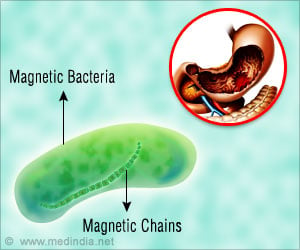Researchers have found that eosinophilic gastritis is a systemic disorder that has high levels of eosinophils in the blood and gastrointestinal tract.

Eosinophilic gastrointestinal disorders can cause a variety of complaints including reflux-like symptoms, vomiting, difficulty swallowing, diarrhea, abdominal pain, failure to grow in childhood and other medical complications. These severe, often painful conditions render children and adults unable to eat many or all foods. Individuals with these diseases often have to fuel their bodies with costly formulas.
"Every day is a challenge," explains Jori Kodroff, a young woman with an eosinophilic gastrointestinal disorder. "Whether it is the daily physical pain of nausea, stomachaches and headaches or the emotional pain of watching everyone around me either eating or talking about food, this disease takes a toll on my life. You never get used to it. I just try to make the best of each day by thinking of all the positive things that I have in my life. I believe that one day there will be a better treatment and a cure thanks to Dr. Rothenberg and other researchers working on this disease, and I am encouraged by the findings in this new study."
Although most prior research on these conditions has focused on eosinophilic esophagitis (EoE), partly because it has well-defined consensus diagnostic criteria, this recent investigation by researchers at Cincinnati Children's advances the understanding of eosinophilic gastritis (EG) through much-needed characterization of the fundamental molecular, histopathologic and clinical features of EG.
"This study is a major leap forward in understanding eosinophilic gastritis," says Marc Rothenberg, MD, PhD, director of the Cincinnati Center for Eosinophilic Disorders at Cincinnati Children's and senior author of the study. "Learning more about each of the distinct eosinophilic gastrointestinal disorders and their similarities and differences brings us that much closer to understanding how to treat and cure each of them."
The study found that EG is a systemic disorder involving profound blood and gastrointestinal tract eosinophilia, meaning that the eosinophil level is higher than normal. As the diagnosis of EG is currently based on histology only, the investigators' molecular findings of a conserved EG transcriptome that is markedly distinct from the EoE transcriptome are notable. Given recent advances in molecular diagnostics for EoE, this finding is especially promising for future diagnostics of eosinophilic gastrointestinal disorders. Additionally, the strong correlation of the disease's tissue pathology with blood eosinophil levels indicates that this blood marker may be useful in monitoring the disease activity (a non-invasive biomarker).
Advertisement
The clinical features of EG and the involvement of T helper type 2–mediated immune responses defined by this study are also likely to facilitate the understanding of EG pathogenesis, inform clinical practice, and fuel therapeutic strategies such as the usage of biological agents that target the mediators identified.
Advertisement
Source-Eurekalert















